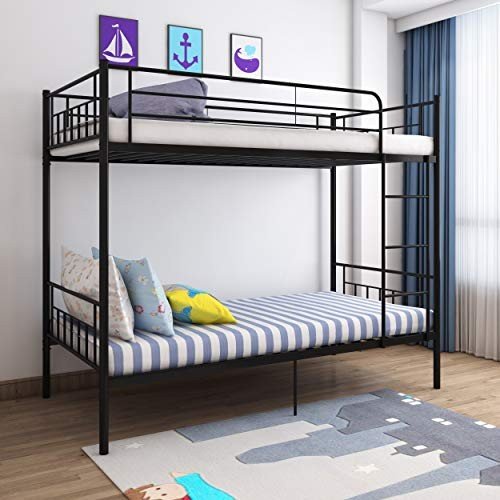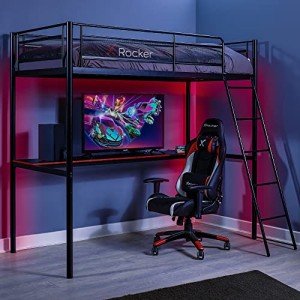A Comprehensive Guide to Children's Bunk Beds: Styles, Benefits, and Safety Considerations
Bunk beds have ended up being a popular option for households wanting to maximize space and supply a fun sleeping environment for kids. With their distinct design, they provide a creative and useful option for shared bed rooms, playrooms, or perhaps guest accommodation. This article explores the various designs of kids's bunk beds, their benefits, security considerations, and responds to some frequently asked concerns.
The Allure of Bunk Beds
Children's bunk beds are more than just space-saving structures; they are likewise a gateway to adventurous dreams and imaginative play. Below is an in-depth assessment of their numerous benefits.
Advantages of Bunk Beds
- Space-Saving: Bunk beds efficiently utilize vertical space, making them a perfect choice for smaller sized spaces.
- Spirited Design: Many bunk bed designs consist of slides, tents, and themed aspects, triggering creativity and enjoyment.
- Partner Sharing: Bunk beds are ideal for siblings sharing a room or accommodating slumber parties.
- Versatile Use: Some designs can be separated into two individual beds, providing versatility as children grow.
- Storage Options: Many bunk beds include integrated drawer storage or shelves, further enhancing their functionality.
Designs of Children's Bunk Beds
The variety of bunk beds available today accommodates various choices and needs. Below is an introduction of some popular designs.
| Design | Description | Best For |
|---|---|---|
| Requirement Bunk Bed | A standard design including one bed stacked above another. | Siblings sharing a room. |
| Loft Bed | Comparable to a bunk bed without the bottom bunk, permits a workspace or play area listed below. | Restricted space for play/desk. |
| L-Shaped Bunk Bed | Two beds organized in an L-shape, typically with additional sections for storage or play. | Unique room designs. |
| Twin Over Full | A twin bed over a full bed, accommodating various sleep needs. | Growing children and teens. |
| High Sleeper | Stands even higher than a loft bed, normally featuring a desk or play area below. | Older kids needing more play/desk space. |
| Camping Tent Bunk Bed | bunk beds (Get Source) with a canopy or tent-like structure, developing a relaxing, enjoyable space. | Active and creative kids. |
Secret Features to Consider
When selecting the ideal bunk bed for kids, the following features deserve thinking about:
- Material: Bunk beds can be made from wood, metal, or a combination. Each has its unique aesthetic and sturdiness.
- Weight Capacity: Always verify the weight limit of the bunk bed to guarantee it can accommodate your kids bunk bed safely.
- Safety Rails: Ensure the leading bunk has strong rails to avoid falls.
- Ladder Security: A properly designed ladder ought to provide easy and safe access to the upper bunk.
- Finishing: Ensure any surfaces are non-toxic and safe for children.
Security Considerations
Security is vital when it pertains to kids's sale bunk bed beds. The following guidelines ought to be abided by:
- Age Appropriateness: Generally, kids under six years of ages need to not sleep in the upper bunk due to safety dangers.
- Strong Construction: Ensure the frame and products are strong and can support the weight without sagging.
- Routine Maintenance: Periodically examine for loose screws, bolts, or other parts that might need tightening up.
- Clear Play Area: Keep the area around the bunk bed totally free of toys and barriers to reduce tripping risks.
Setting Rules for Safe Use
Establishing guidelines for bunk bed use will help guarantee security:
- Limit Jumping and Climbing: Children ought to be recommended against jumping from the leading bunk and getting sale on bunk beds the sides.
- Monitoring Sleepovers: Monitor young visitors while they are using the bunk beds for kids bed for the very first time.
- Educate on Ladder Use: Teach how to utilize the ladder safely, emphasizing the importance of dealing with the ladder when going up or down.
Frequently Asked Questions
1. What age is appropriate for a kid to sleep in the top bunk?
Most makers advise that children ought to be at least six years old to sleep in the upper bunk. This standard is developed to reduce the threat of falls.
2. Can bunk beds be customized?
Yes, numerous manufacturers use customizable options, including colors, materials, and extra features like drawers or desks.
3. Are bunk beds safe for weight?
Bunk beds have weight limitations, normally varying from 200 to 400 pounds, depending upon the design and product. Constantly inspect the producer's specifications.
4. How do I preserve and clean up a bunk bed?
Regularly inspect for loose parts, keep the bed tidy by cleaning down surface areas, and ensure the bedding is fresh to promote a safe and hygienic sleep environment.

5. Can bunk beds be separated into private beds?
Numerous bunk beds feature an option to separate them into 2 specific beds, offering long-lasting versatility.
Kid's bunk beds are more than simple furniture; they are a practical, versatile, and creative part of a kid's space. With various styles readily available and various security considerations to remember, parents can select the perfect bed that fits their space, meets their children's needs, and imparts a sense of experience. By understanding the advantages, designs, and safety steps connected with bunk beds, households can produce a delightful and safe sleeping environment for their kids. Whether for siblings sharing a space or space-saving solutions, bunk beds remain a precious option for numerous households.








